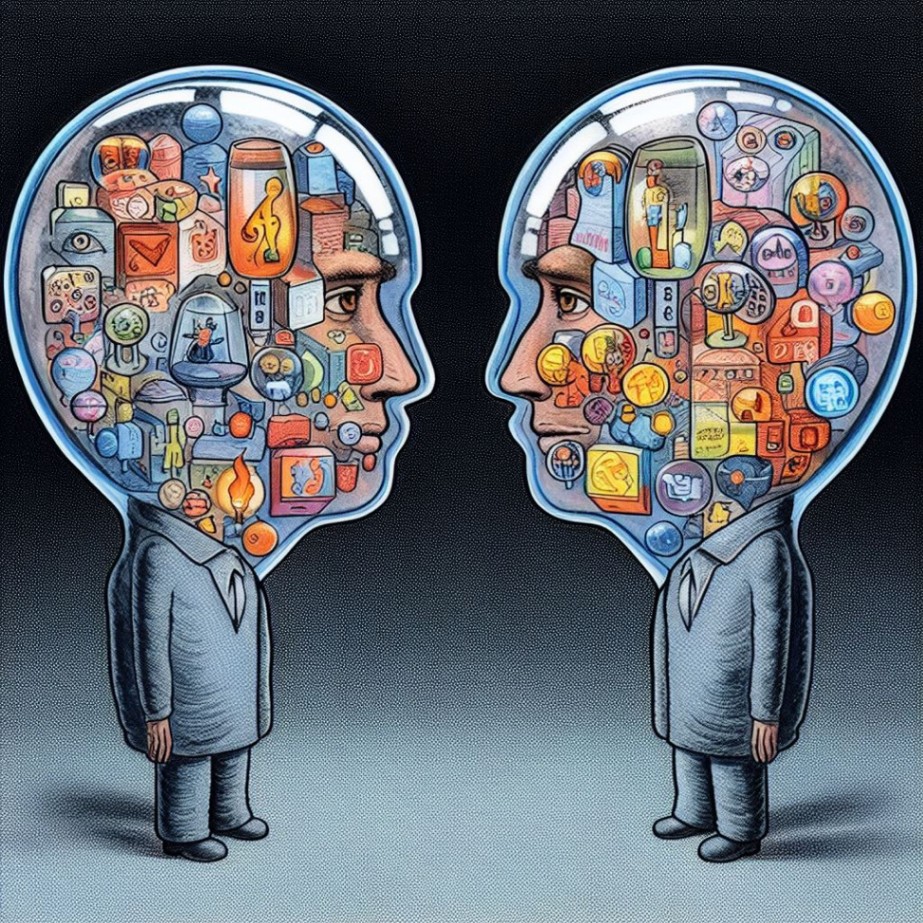Observing Images, Not True Reality. (4 min 24 sec)

Preview
1. "The observer is the image, which has been created."
The observer, the one perceiving the world, is a mental construct or image formed by past experiences, beliefs, and conditioning.
2. "The observer is the censor."
The observer acts as a censor, filtering and judging what is perceived based on preconceived notions and biases.
3. "The observer is the entity that judges."
The observer makes judgments about the observed objects, situations, and people.
4. "The observer is the entity that compares."
The observer engages in comparisons, evaluating things based on its own set of criteria and preferences.
5. "Then the observer looks at the object, either the flower or his own experience, or his relationship with somebody."
After forming judgments and comparisons, the observer turns its attention toward the object of perception, whether it's an external object, a personal experience, or a relationship with someone.
6. "The observer is the image looking at the image which he has created about the other."
The observer views the world through the lens of the mental images it has constructed, including the images it has created about others.
7. "The relationship between the observer and the observed is not a relationship, it is two images looking at each other."
The interaction between the observer and the observed is not a genuine relationship at all but rather a clash of mental images, as both the observer and the observed are viewing each other through their respective constructed images.
8. This practical example demonstrates how our mental constructs and conditioning shape the way we perceive and interact with the world.
I, as the observer, am walking through a park on a sunny day. As I stroll along, I come across a person sitting alone on a bench.
Point 1: "The observer is the image, which has been created."
I, the observer, am not a blank slate. My past experiences, beliefs, and conditioning have shaped my perception of the world.
Point 2: "The observer is the censor."
When I see the person on the bench, my mind immediately filters this observation. I might start judging their appearance, clothing, or body language based on my past biases and conditioning.
Point 3: "The observer is the entity that judges."
My mind begins to form judgments about this person. Maybe I think they look lonely or I make assumptions about their mood or personality, all based on my past experiences.
Point 4: "The observer is the entity that compares."
As I continue walking, I start comparing this person to others I've encountered in the past. I might unconsciously compare them to friends, family members, or even characters from movies.
Point 5: "Then the observer looks at the object, either the flower or his own experience, or his relationship with somebody."
In this case, the "object" is the person on the bench. I shift my attention from my judgments and comparisons to the person.
Point 6: "The observer is the image looking at the image which he has created about the other."
As I approach the person, I realize that my initial judgments and comparisons were based on my mental constructs. I recognize that my perception of this person was influenced by my past conditioning and beliefs.
Major Conclusion: "The relationship between the observer and the observed is not a relationship, it is two images looking at each other."
At this moment, I understand that my interaction with the person on the bench is not a true connection. It's a clash of mental images – my preconceived notions about them and their mental constructs about me, even though we've never spoken.

No comments.